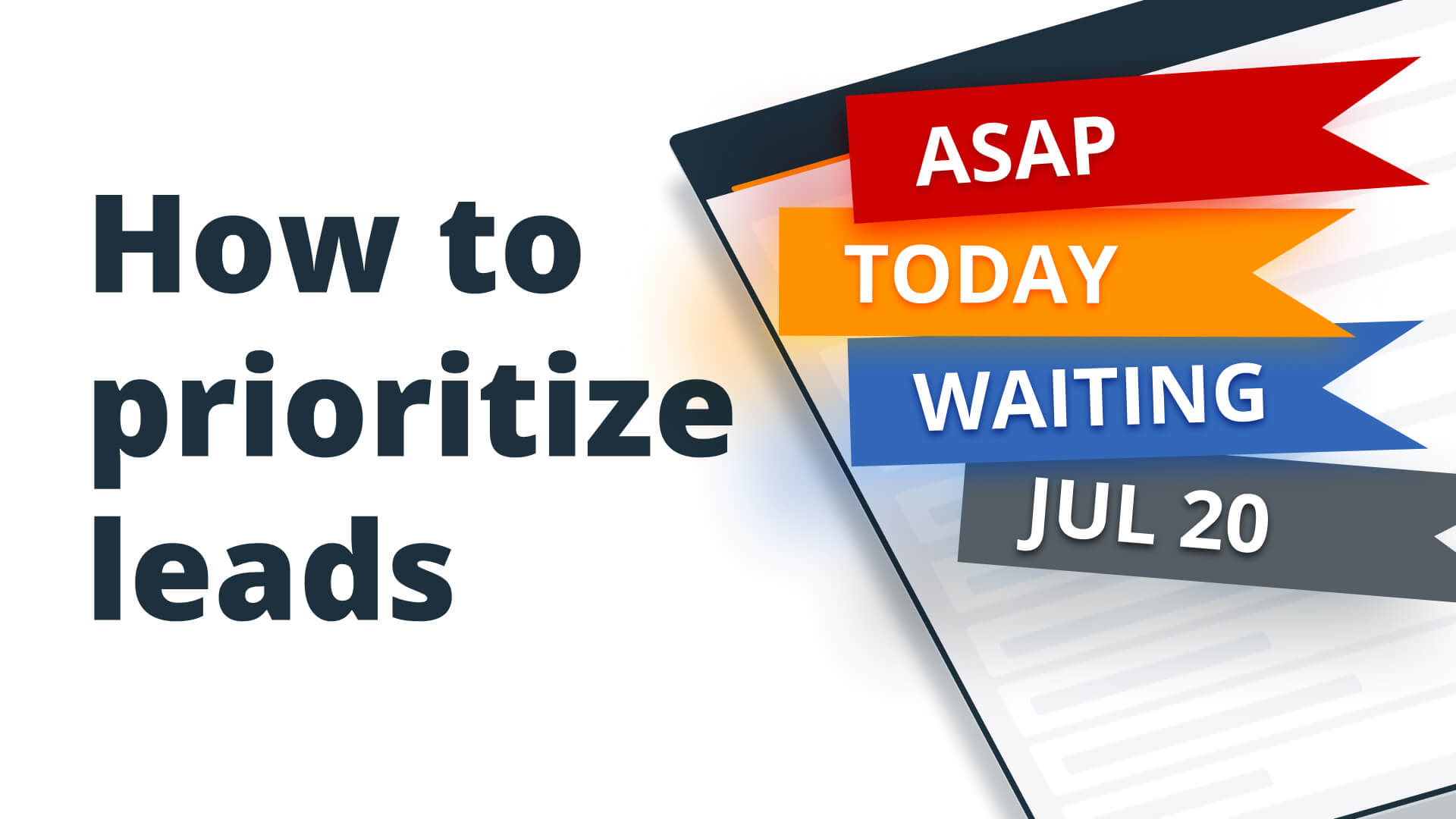

B2B teams are constantly adapting to new sales environments.
While virtual meetings and shifting buyer behavior continue to reshape the landscape, some companies flourish while others struggle. The key difference between the two is a willingness to adapt, evolve, and experiment with new tactics.
Lead Generation
Generating quality leads is the foundation of any successful B2B sales operation. Without a steady stream of qualified prospects, even the best sales teams will struggle to hit their targets.
Start by identifying your ideal customer profile and focusing your efforts on channels where they’re most active. This could include LinkedIn outreach, industry-specific forums, webinars, or content marketing. The key is to cast a wide net while maintaining quality over quantity.
In B2B lead generation, your CRM becomes essential for tracking every touchpoint and monitoring which channels generate the highest-quality leads.
Document lead sources, initial pain points, and any relevant context that will help your sales team personalize their outreach later.
Additionally, implement lead scoring to prioritize prospects most likely to convert. Not all leads are created equal, and a strong CRM helps you focus energy where it matters most.
Virtual Experience
McKinsey’s report found that more than three-quarters of both B2B sellers and buyers now prefer digital self-serve and remote human engagement over face-to-face interactions, even after lockdown restrictions lifted.
Moreover, all signs point to increased comfort and ease in the virtual environment. The report continues:
“70 percent of B2B decision-makers say they are open to making new, fully self-serve or remote purchases in excess of $50,000, and 27 percent would spend more than $500,000.”
Focusing on the virtual experience means investing in digital communication tools, but also improving your customer/client interface. Ensure that your digital offerings are seamless.
Can your buyers effortlessly reach your team? Are your video meetings high-quality and error-proof? Audit your technology stack and your employers’ knowledge of processes to ensure your virtual experience meets’ buyer’s new expectations.
To go one step further, consider allowing for self-service sales to attract interested prospects and encourage top-funnel activity.
Personalized Outreach
The service you provide to buyers plays a significant role in your success.
Moving forward, personalization will be the difference between losing business and retention.

A Gartner B2B buyer survey found that 80 percent of buyers prefer the “sense-making” sales approach.
To put it simply, they’re overwhelmed by the availability of high-quality content about products and services when researching purchases. They want sellers to “simplify learning by helping them evaluate and prioritize relevant information, all while helping customers arrive at their own understanding.” Enter: personalization.
This doesn’t just apply to new prospects and leads, but existing customers as well.
The report continues:
“In an era of too much good information, the sense-making approach engenders greater customer confidence, reduces customer skepticism and, most importantly, yields far greater likelihood of the customer purchasing an upgraded, premium offering from a supplier.”
Your CRM should be the foundation of your outreach.
Document every conversation, preference, and pain point.
Before each interaction, review the complete history so you can reference previous discussions and demonstrate you truly understand their business.
Use your CRM to segment contacts based on industry, company size, or specific challenges—this allows you to tailor your messaging and recommendations to their unique situation rather than sending generic pitches.
Relationship Building
If you’re worried about B2B lead generation (as many understandably are), start with the low-hanging fruit—your current customer or client base. Existing customers/clients can offer you valuable insights that allow you to optimize your product, service, or sales process for future leads.
Ask your team to poll their clients on their needs, pain points, and expectations. Additionally, inquire about your product information. Is it too overwhelming? Do they understand and consume your new and updated content? Ask for honest and candid feedback on their overall experience. Use this to refine your process and offer further personalization to your valued buyers.
Focusing on retention will not only give you a solid foundation but also increase word-of-mouth recommendations or referrals.
Strong account management practices, tracked through your CRM, ensure no client feels neglected or taken for granted. Schedule regular check-ins that aren’t about selling but about genuinely understanding how their business is evolving—these conversations often uncover upsell opportunities, referrals, or valuable product feedback.
Sales-Marketing Alignment
Marketing and sales go hand-in-hand, which means the two teams need to support one another, and not just sporadically throughout the year.
The best B2B sales teams strive for continuous alignment. Too often, sales teams miss out on valuable marketing resources and collateral that can be repurposed into sales tools. Poor communication and collaboration are often to blame. For instance, marketers might create a value-driven white-paper to drive digital traffic and subscribers. However, the sales team doesn’t know it exists or that they send that to warm prospects.
Social media is a perfect example. Your marketing team creates engaging content targeted towards your ideal audience and demographic. They also use social listening to further refine your customer or client persona (both via their own channels and competitors).
Marketers are plugged into feedback on your industry, trends, and opinions on products/services. These types of insight and data could be instrumental in your sales process. In short, marketers should be a salesperson’s best friend.
With greater sales-marketing alignment, the marketing department can become the virtual eyes and ears to help the sales team understand prospects, address appropriate needs and pain points and ultimately, generate more leads.
This shift doesn’t have to be complicated; simply ensure the teams meet and work together. A shared CRM system creates a single source of truth where both teams can see what’s working, which content resonates, and where leads are in their journey.
Streamlined Communication
Time is an ever-shrinking commodity as companies strive to do more with less each year. If you want to get your foot in the door when pitching a sale, consider auditing how you communicate with customers and identify ways to improve your calls, emails, and messages.
Evaluate client meetings and look for ways to give them their time back. This could mean shortening meeting times or limiting the number of people on the call instead of bringing the whole team on.
“A shorter meeting can focus on one key topic and only involve the people affected, freeing up time for employees who don’t want to sit through an hour-long meeting to cover a 10-minute topic,” explain the experts at Hubgets.
Their advice is to put it into action.
“Creating standards for meeting lengths and agendas could make your employees more agile and productive over time.”
Better meetings can drive better results as your attendees are more engaged and less likely to get distracted by email notifications or other work.
Your CRM plays a crucial role here, too. Especially if it’s integrated with AI meeting assistants. Document meeting outcomes immediately so you don’t need to schedule unnecessary follow-up calls just to clarify next steps.
Network Building
Building your professional network remains crucial for B2B sales success, limiting opportunities to meet new contacts and drive leads.
However, you can still build valuable relationships by joining online networking groups (and in-person events when possible).
“Business networking groups are designed for the sole purpose of bringing people in business together to forge connections,” explains the team at SMB Compass.
They outline the numerous benefits these groups can offer (even when virtual), including:
- Generating brand awareness and opportunities
- Gaining new insights into your industry
- Establishing your team members as experts in their field
Commit to building your network by investing in virtual and in-person networking opportunities.
When you meet someone at a networking event, immediately add them to your CRM with context about where you met and what you discussed. You can even use an AI Business Card Scanner.
This simple act can turn networking from compiling business cards into building real relationships.
Account Management
Effective account management isn’t just about closing deals. It’s about nurturing relationships that lead to renewals, upsells, and referrals.
Your CRM should be the hub for all B2B sales activities. This holistic view helps you identify at-risk accounts before they churn and spot opportunities for expansion.
Moreover, it’s important to assign clear ownership for each account and establish regular touchpoint schedules.
Besides, when your entire team can access data in your CRM, account transitions become seamless, and clients never feel like they’re starting over with someone new.
Why use CRM for B2B Sales
The landscape of B2B sales continues to evolve, and will definitely be different (and still challenging) for many organizations.
The good news is that teams can adapt.
Using the above strategies and tips, you can ensure that your team evolves and thrives, whatever comes next.
However, implementing these strategies effectively requires the right foundation. A CRM system isn’t just a nice-to-have tool. It’s the backbone that makes all of these B2B sales strategies possible.
From lead capture to personalized outreach, your sales CRM connects the dots.
Without a CRM for B2B sales, even the best strategies fall apart. OnePageCRM helps you focus on building strong relationships, not just storing and categorizing data.









Thanks for such detailed article. It’s really usefully for everybody, who wants to improve their B2B Sales.
Great to hear that you enjoyed it Jane! Keep the feedback coming!
Yes it’s so important to evaluate your client meetings so you can improve them in the future.